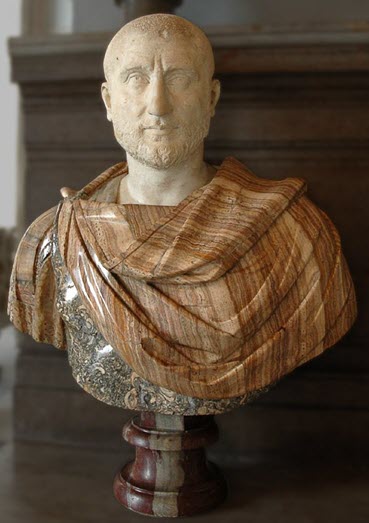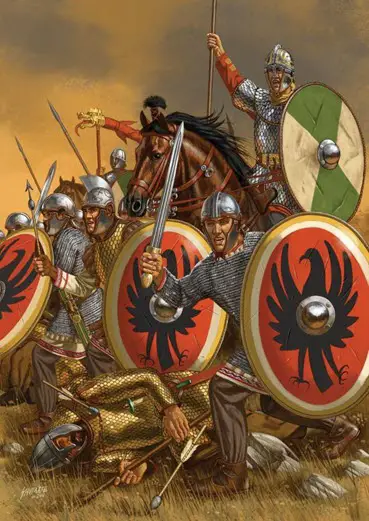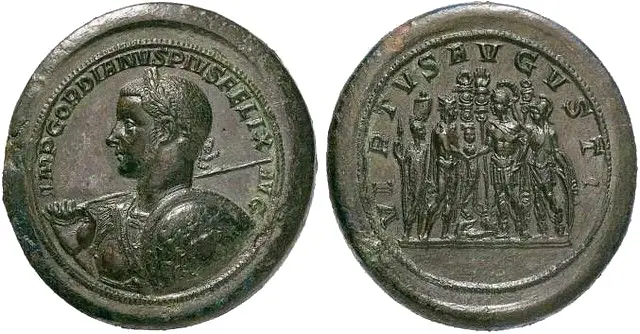
Gordian III, the youngest Roman Emperor, was born on the 20th of January 225 as Marcus Antonius Gordianus Pius Augustus. He was born to his mother Antonia Gordiana (Emperor Gordian I’s daughter), and his father, Junius Balbus.
He began ruling the Roman Empire, when he was 13, as the first legal youngest emperor between the years 238 and 244. Taking up his maternal grandfather’s name in 238 with the beginning of his ruling days.
Gordian III’s rise to power begins with Maximinus Thrax’s proclamation as the emperor in 235. It began after Alexander Severus, the Emperor, was assassinated in Moguntiacum.
Monguntiacum was the site for the settlement of the Celtic and the same site where the Romans established their military camp between 14 and 9 BCE.
Who was the oldest Roman emperor?
Content
Augustus (later known as Octavian) was the first ancient Roman emperor. Augustus rose to power after the assassination of Julius Caesar in 44 BCE.
Which Roman legion crucified Jesus?
Jesus’s crucifixion is attributed to the Legio X Fretensis (“Tenth legion of the Strait”)- a legion of the Imperial Roman army.
How old was Gordian III when he died?
Gordian III was 19 when he died. (225 AD–244 AD)
Gordian III’s Ascencion as the Roman Emperor

Gordian III ascended to the throne at the start of dubbed the “third-century crisis.” It came after the assassination of Alexander Severus in 235. This was a time of instability and brief imperial reigns; from 235 C.E. and 284 C.E.
No less than 25 different emperors controlled Rome. In the beginning, instability was created by a lack of agreed-upon succession laws, which led to competition and warfare amongst rival claimants after each emperor’s death.
The Roman Senatorial board had a growing hostility to Maximinus and toward most of Rome’s populace. However, in 238, Gordian I and Gordian II, Gordian III’s uncle, and grandfather, claimed the joint rules in the Africa Province.
As a result, Numidia’s governor – Cappellianus, who supported Maximinus Thrax, put down the insurrection in less than a month.
Balbinus and Pupienus were elected as the joint rulers by the Senate to express the displeasure he had toward Maximinus. But, due to the unpopularity of these senators, the Senate elevated Marcus Antonius Gordianus to the higher position of a Caesar.
Maximinus experienced problems deploying his army through an Alpine winter as he moved fast to fight the new team of emperors elected by the Senate.
Upon his arrival in Aquileia, Maximinus surrounded the city with an army to face the problem of the shortage of supplies. Unfortunately, the troops were unhappy with Maximinus, and Legio II Parthica assassinated him after about 4 weeks.
Despite Maximinus’ death, both Balbinus and Pupienus were hopeless from the outset due to widespread rioting, military unrest, and a catastrophic fire that devastated entire Rome in 238 ( June ).
On 29 July, Gordian became the single Roman Emperor after the assassination of Balbinus and Pupienus by the Praetorian Guard.
The Reign of the Youngest Roman Emperor

The Imperial government was handed over to the families of the aristocrats after the realization of the young age of Emperor Gordian III. The aristocrats had been controlling Rome via Senates.
Likewise, Sabinianus, in 240, tried to rebel in the province of Africa but could not succeed. And in 241, Gordian III married Furian Sabinia, the daughter of Timesitheus, who had recently been chosen as the praetorian prefect.
Timesitheus soon rose to the de facto leader of the Roman Empire as Praetorian Guard’s commander and the Roman Emperor’s father-in-law.
During Gordian’s reign, significant earthquakes were so catastrophic that they destroyed cities and their inhabitants. Gordian examined the Sibylline texts regarding these tremors.
The young emperor named her father the commander of the Praetorian Guard in 241. Tranquillina married Gordian in May of that year.
She rose to the position of Roman Empress and was given the honorary title Augusta. The young emperor acknowledged Timesitheus’ diplomatic indispensability and Tranquillina’s eligibility as an empress through her nuptials to Gordian.
One of the Greatest Roman battles, The Battle of Resaena

The boundaries of the Roman Empire during the 3rd Century had eroded as opposed to the Germanic tribes of the Danube and Rhine, while the Empire of Sassanid of the Euphrates had intensified its assaults.
Gordian III dispatched several troops towards the East by opening the gates of the Temple of Janus. And as per Roman History, it was the last time the gates to that temple were opened, and it was done after the Sasanians conquered Mesopotamia under the leadership of Shapur I.
As a result, the Sassanids were forced to drive across the Euphrates and also lost the battle at the Battle of Resaena. The battle of Resaena gave a success story to the campaign, and Gordian III, as an army, prepared to invade the enemy’s country.
The campaign, unfortunately, took the life of Timesitheus, and without him, the unrest and the enemy jeopardized the campaign and the emperor’s safety. Gordian triumphed over the campaign’s victory and talked about his accomplishments to the Senate.
Consequently, the new Praetorian Prefects were selected: Marcus Julius Philippus – Philip the Arab and his brother Gaius Julis Priscus.
The change in the Praetorian prefects forced Emperor Gordian III to launch the 2nd campaign. And in February 244, the Sasanians launched a vigorous counter-offensive to prevent the Roman march on Ctesiphon.
Minting of Coins During Gordian III’s Reign

Gordian’s rule marked the beginning of a new era in the mint’s history: Antioch had not created tetradrachms since 219, denarii since 223, and no coins since 235.
Down to 238, its supply of precious metal currency, particularly denarii, was therefore infrequent, and it remained, in some ways, a local mint, albeit a huge one.
However, after Gordian’s accession, it became a significant center of coin manufacture, second only to Rome.
During the reign of Gordian III, the emperor changed the mint of Antioch from a regional mint producing mostly Greek-legend coins in silver and bronze to one that only made Roman values with Latin inscriptions in base silver and gold.
Death of Gordian III
The reign of Emperor Gordian III came to an end on 11 February 244. The details of his death are unknown; nonetheless, people widely assumed across the empire that his successor, Philip the Arab, had commanded the young emperor to be lynched by his soldiers.
However, evidence from the Sassanid Empire indicates that the war killed him in combat with their monarch, Shapur I. The rumor that Philip had slain the famous young monarch Gordian would follow the new emperor for the duration of his five-year rule.
As aforementioned, Gordian’s fate after the war is unknown. According to Sasanian sources, the Battle of Misiche took place in Iraq, resulting in a significant Roman setback and the demise of Emperor Gordian III.
One school of thought says that Emperor Gordian was assassinated by his disgruntled troops at Zaitha, whereas Philip’s role is unknown.
The burial of Gordian’s body is likewise contentious. As per David S. Potter, the departed emperor’s body was brought to Rome by Philip and was followed by the deification.
However, as per Lieu, Edwell, and Dodgeon, Emperor Gordian was laid to rest at Zaitha by Philip, and it was done after failing of the Sasanian’s expedition.
Legacy
Gordian’s innocence, good temperament, the deaths of his grandpa and uncle, and his tragic destiny at the hands of another usurper gave him the Roman people’s respect. Despite the new emperor’s resistance, Gordian was deified by the Senate after his death to pacify the populace and prevent unrest.
However, during most of the century, emperors reigned for only a short time. Philip the Arab lived only until 249, when he was defeated in combat by a usurper.
Philip may have been Rome’s first Christian emperor, albeit not legitimizing the faith. Constantine, I was given the duty. The same year, his kid was assassinated.
Gordian III did not have much time to leave his impact on history, despite being one of the most influential people in the world for just over a decade.
Conclusion
Gordian’s reign was part of the empire’s decline. However, in terms of the cultural development of Europe and its debt to Rome, the realm had yet to transition from a pagan to a Christian power.
At the very least, Gordian III figuratively led and, to some extent, permitted the continuation of what was culturally a unified space, across which religious beliefs, philosophical ideas, and many shared goals tied people collectively.
